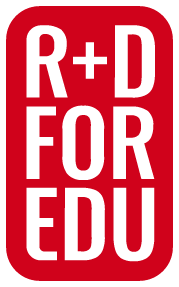Collection Development Staffing Models
There is a great deal of institutional variation in the titles, professional training, and duties of staff involved in collection development and management activities. Administrative structures also vary depending on the type of library. This section will explore common staffing models in academic libraries. Collection development tasks overlap with those that occur in non-academic health sciences libraries, and staffing models will vary depending on the size of the institution. Many non-academic health sciences libraries are run by a lean staffing model where the tasks assigned across divisions and units in an academic library are done by a single person.
Academic libraries usually have several departments or staffing units involved in collections. Employees are usually a combination of librarians and support staff. These can include the who decide on what to collect, acquisitions staff who process payments and invoices, licensing and records management who ensure records are loaded and all purchasing licenses are appropriate and signed, technical services or cataloging staff who make sure the records are accurate, and staff who ensure online materials are appropriately routing through authentication systems (e.g., ) and other IT concerns.
may also have collection development responsibilities, having direct purchasing power or only recommending purchases to a collections librarian who is in charge of final decision making and purchasing. Liaisons may be assigned to a specific department, unit, or college. Armstrong (2020) has a training guide for liaisons performing collection development work. Individual institutions may also have specific liaison competencies that include collection development.
Some health sciences libraries run independently with all of those departments contained within them, while others are integrated into a bigger system and the technical services components of collections development are performed centrally. In the latter scenario, only selection may take place at the health sciences library building. At other institutions, there may only be one or two employees who are health sciences subject experts within a general academic library setting. Additionally, collection development staff may have responsibilities such as managing open access funds, overseeing the institutional repository, serving as a scholarly communication liaison, and more.
Competencies for Collection Development Staff
- Medical Library Association. 2017. “MLA Competencies for Lifelong Learning and Professional Success.” [Competency 2: Information Management]
- The ACRL “Competencies for Special Collections Professionals” part III A. Collection Development contains a list of core competencies for a librarian participating in collection development of a special collection, such as medicine.
- The RUSA “Guidelines for Liaison Work in Managing Collections and Services” provides guidance for the liaisons to carry out their collection development tasks.
- The Ohio State University Libraries’ “A Framework for the Engaged Librarian: Building on our Strengths” contains lists of competencies and best practices for subject specialists in academic libraries.
References and Further Reading
Armstrong, A. M., & Dinkle, L. (2020). The Library Liaison’s Training Guide to Collection Management. ALA Editions.
Johnson, P. (2018). Fundamentals of collection development and management. American Library Association.
Chapter 2 is on “Organization Models, Staffing, and Responsibilities.”
Norton M.J., & Rupp, N. (2017). Transforming medical library staff for the twenty-first century. Rowman & Littlefield.
The librarian who purchases, rents, or subscribes to resources for a specific subject area(s).
A method of user authentication that employs one username and password for institutional applications and resources. Examples of SSO systems commonly used in libraries are OpenAthens and Shibboleth.
A librarian designated as the formal library contact with a department, college, or other academic unit. Liaisons may have collection development responsibilities.

